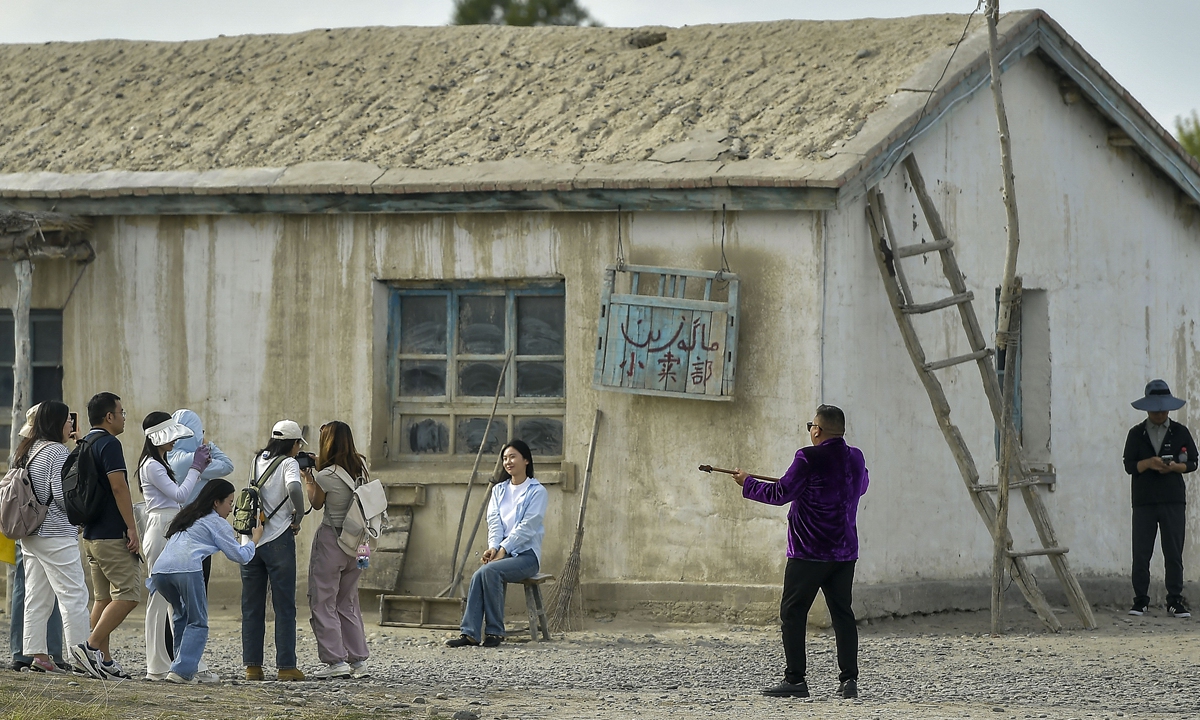
A filming location of the TV adaptation of novel My Altay Photo: IC
To celebrate outstanding works by ethnic minority authors and showcase the vibrant scene of Chinese literature, the "2024 Chinese Literature Festival: Junma Award Night" was recently held in Nanning, South China's Guangxi Zhuang Autonomous Region.
This year's winners have shone a particular spotlight on border ethnic regions and the lives of ethnic minority communities.
Among the notable works recognized were
E Nuo Riverside by a Uygur writer,
The Flowers Are Always This Red by a Tajik writer, and
On the Plateau by by a Tibetan writer. These novels delve deep into the stories of China's border regions, portraying the unique cultural landscapes of communities that inhabit these areas.
"These works vividly showcase the diverse culture and history of ethnic minorities, presenting the general public with a rich, multifaceted cultural landscape infused with ethnic characteristics. This serves as a window into understanding the deep roots and spirit of Chinese culture and understanding China as a multi-ethnic nation," Xiong Kunxin, a professor at Minzu University of China in Beijing, told the Global Times.
The popularity of border ethnic region works is not limited to the realm of literature. This year, the television adaptation of novel
My Altay by Li Juan became a cultural sensation, drawing widespread attention to the original literary work. Set in the picturesque Altay in Northwest China's Xinjiang Uygur Autonomous Region, the show, titled To The Wonder, has put a spotlight on nomadic life in the region.
The popularity of the show not only spurred a renewed interest in the novel, but also once again brought the region to tourists' attention.
"Film, TV and literary works featuring border ethnic regions themes have become quite popular, sparking a strong interest in those distant and unfamiliar places among the public, and inspiring a desire for firsthand experiences. At the same time, these works play a role in helping more people to understand and appreciate the unique charm of border region culture. They continue to shape people's perceptions and emotional connection to these areas," Fei Fei, a publicity official with the Altay Bureau of Culture, Sports, Radio, Television and Tourism, told the Global Times.
The appeal of these works lie in their authenticity and the sense of discovery they offer. For many viewers and readers, border ethnic region stories provide a refreshing departure from the urban-centric tales that dominate mainstream media. They offer a chance to explore the diverse and often unfamiliar regions of China, filled with unique lifestyles that are seldom seen in the bustling cities of the country.
"The lifestyle, spirit, and worldview of people living in distant border areas, shaped by diverse environments, cultures, and religious backgrounds, offer a fresh perspective for many readers in other regions of the country. These stories serve not only as a novel experience, but also as a reference for various ways of life," Xu Jiang, president of Xinjiang Juvenile Publishing House, told the Global Times.
When it comes to telling the story of China, the narratives of ethnic minority communities in border regions are an essential component. Increased attention to the real-life experiences of these communities, along with literary works centered on them, will clearly contribute to higher-quality and the more sustainable development of Chinese literature, Xu added.
The author is a reporter with the Global Times. life@globaltimes.com.cn




